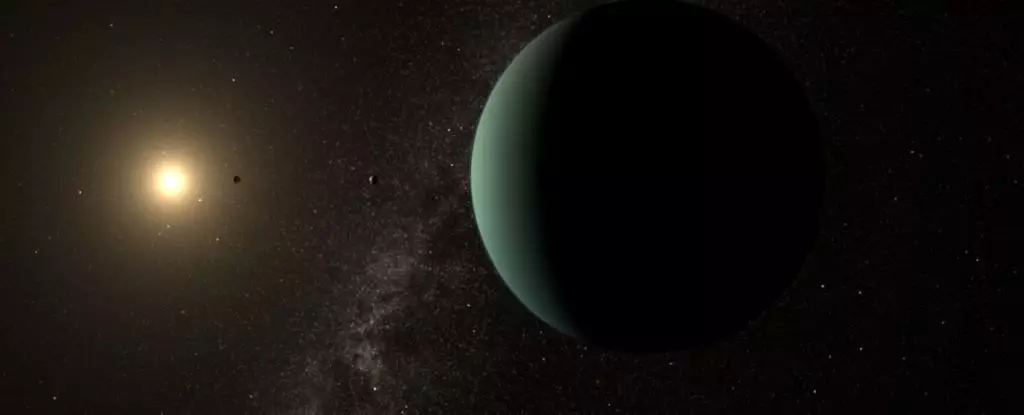Recent astronomical advances have brought the exoplanet HD 20794 d into the spotlight, challenging our understanding of potentially habitable worlds beyond our Solar System. Located merely 20 light-years away, this celestial body exhibits several characteristics that raise eyebrows among astrobiologists and astronomers alike. While the notion of immediate cosmic neighbors capable of supporting life is enticing, the scientific community is urging caution, reminding us that crucial details about this distant world remain to be uncovered.
Astrophysicist Michael Cretignier from Oxford University describes the experience of confirming HD 20794 d’s existence as profoundly exhilarating yet fraught with uncertainty. Initial observations met skepticism as they fell near the spectrograph’s limit of detection. However, what followed was a meticulous analysis that led to the confirmation of this exoplanet. The excitement is buoyed by its proximity to Earth, hinting at the possibility of future observational missions capable of capturing its image—an endeavor that could unravel many mysteries about its environment and potential for supporting life.
The significance of HD 20794 d is its placement within the habitable zone of its star, a region where conditions may allow for the existence of liquid water—one of the fundamental ingredients for life as we understand it. The importance of this can’t be overstated; liquid water is not merely a convenience for life, but rather a fundamental requirement for biological processes. Thus, the presence of this essential element is a primary consideration in the search for habitable exoplanets.
When assessing the habitability of exoplanets, scientists utilize the concept of the habitable zone, delineating a specific orbital region around a star where conditions may be ripe for liquid water. HD 20794, a yellow dwarf star somewhat akin to our Sun, offers a promising opportunity for understanding these dynamics further. With an age that allows for the stabilization of orbiting bodies, this star presents itself as a fitting backdrop for studying potential life-sustaining worlds.
However, the intricacies do not end at the star’s characteristics. The orbital mechanics of HD 20794 d are particularly revealing. Though it orbits within the habitable zone over the span of 648 days, its elliptical orbit means it occasionally strays too far from the warmth of its star, placing it at risk for conditions that could lead to water freezing solid. This crucial detail highlights the complexity inherent in determining a planet’s capacity for supporting life and underscores the need for detailed studies to assess any potential habitability.
With a minimum mass approximately 5.82 times that of Earth, HD 20794 d sits intriguingly within the category of ‘super-Earths.’ Yet, the exoplanet’s radius remains undetermined; this opens up a spectrum of possibilities regarding its composition. A smaller radius could indicate a rocky surface similar to terrestrial planets, while a larger radius implies a more gaseous, less stable composition reminiscent of a mini-Neptune. This ambiguity poses a significant question—what type of world is HD 20794 d, and how does its physical structure align with our definitions of habitability?
The implications extend well beyond mere classification. The density and composition of an exoplanet influence its geological and atmospheric dynamics, both of which are critical in defining habitability. For instance, a rocky exoplanet might possess the geological complexity to support a diverse range of ecosystems, whereas a gaseous planet may lack the solid ground necessary for life.
As excitement continues to build around HD 20794 d, the scientific community remains focused on future research endeavors. Enhanced observational technologies will play a pivotal role in uncovering more about this intriguing world. Understanding its atmosphere, geological characteristics, and potential for maintaining liquid water will be vital for determining whether it truly belongs in the conversation about habitable planets.
While HD 20794 d presents an exhilarating opportunity within the realm of exoplanet exploration, it is essential to approach this discovery with a balanced perspective. The excitement of potential habitability must be tempered with rigorous scientific scrutiny, ensuring that we responsibly pursue the dream of finding life beyond Earth. The pursuit of knowledge about our cosmic siblings continues, promising new insights into where we stand in the grand tapestry of the universe.

